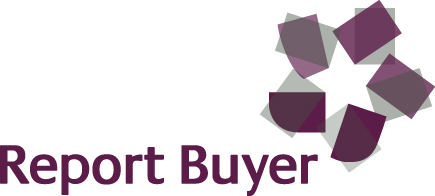Innovators in Senior Living Redefine Leadership in Health and Safety
June 7, 2022
NEW YORK, NY—The International WELL Building Institute (IWBI) recently announced that more than 600 senior living communities around the world are enrolled to pursue or have achieved the WELL Health-Safety Rating or WELL Certification, representing more than 30 million square feet and a more than four-fold adoption increase in the sector since a year ago. Several innovators in senior living are helping drive the tremendous growth and adoption of WELL strategies across the sector, especially as the pandemic continues to elevate the importance of health, safety and well-being in our buildings and communities, particularly those that serve our senior populations.
The WELL Health-Safety Rating—based on a subset of features in the WELL Building Standard—is an evidence-based, third party-verified rating for all new and existing buildings and facility types, focusing on operational policies, maintenance protocols, communications and engagement strategies and emergency plans to address acute health threats including COVID and beyond.
“We are excited to work with such an amazing group of leaders in senior living who are demonstrating global leadership in health by deploying evidence-based WELL strategies to prioritize the safety and well-being of our grandparents, parents and other loved ones as well as those who care for them,” said Rachel Hodgdon, president and CEO of IWBI.
By committing to the WELL Building Standard and the WELL Health-Safety Rating, these sector leaders are not only helping redefine leadership in advancing health and safety, but also reshaping the future for all senior living facilities.
Notable recent sector achievements and commitments include:
- Enlivant: the first senior living organization to achieve the WELL Health-Safety Rating for its entire portfolio of 215 senior living communities. It pursued the WELL rating to further demonstrate its commitment to promoting a safer and healthier environment for its employees and residents.
- Inspir Carnegie Hill: a flagship Maplewood Senior Living facility in Manhattan. In March, it became the first assisted living facility in New York City to achieve the WELL Health-Safety Rating.
- Sabra Health Care REIT: a real estate investment trust (REIT) serving the health care industry. In April, it announced that it is encouraging all of its operators to pursue the WELL Health-Safety Rating as part of its ongoing environmental, social and governance (ESG) initiatives.
- The Jewish Home of Rochester: a senior living community in New York that achieved the WELL Health-Safety Rating in May.
- Lendlease’s Ardor Gardens: senior living facilities that have recently achieved the WELL Health-Safety Rating across their portfolio in Shanghai.
- Pacific Care Home and China Life Caregarden YUN JING Senior Apartments: senior living facilities across multiple cities in China and senior apartments, respectively. They have achieved WELL pre-certification, pursuing health and well-being features across all 10 WELL concepts under the WELL Building Standard. These facilities are setting an example for others in China to follow suit; China is one of the countries with serious growth in its aging population.
- The Views Senior Living of Marion: a senior living community in Iowa that achieved WELL Certification at the Gold level.
- Anthem Memory Care: a senior living company that has received the WELL Health-Safety Rating for its portfolio of 22 communities to enhance its care and support for seniors living with memory loss.
“Our seniors, their families and [the] community teams that support them all deserve spaces that protect their health and well-being,” said Dan Guill, CEO of Enlivant. “The WELL Health-Safety Rating aligns perfectly with Enlivant’s mission of creating safe and vibrant communities where our residents can thrive.”
Today, approximately 49 million Americans are 65 and older, and supportive senior environments are increasingly an important part of how we accommodate the aging process. Over the next 10-15 years, the population of Americans ages 65 years or older will more than double to become about 25% of the U.S. population, and for the first time in U.S. history, older people will outnumber children. Globally, between 2015 and 2050, the proportion of the world’s population that’s over 60 years old will nearly double from 12% to 22%, according to the World Health Organization.
Science-backed, evidence-based WELL programs support senior living residents’ health, safety and overall well-being through strategies to improve air and water quality, sleep-wake cycles, balanced nourishment, thermal comfort and bolstered health services. Other strategies include helping seniors stay physically active and socially connected, and enhancing safety by managing risk factors including transmittable diseases and trips and falls.
WELL is now being adopted in 110 countries in 35,000 locations, totaling 3.5 billion square feet of all space types. It is the leading global framework for scaling health across buildings, organizations and communities. Developed over the course of 10 years and backed by the latest scientific research, WELL outlines key building-level interventions and organizational strategies across 10 categories: air, water, nourishment, light, movement, thermal comfort, sound, materials, mind and community.
Along with improving the health, safety and wellness of its residents, senior living communities that implement WELL strategies can also support the recruitment and retention of senior housing employees, which has become an industry-wide issue since the pandemic.

